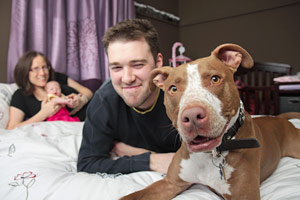How do we achieve No More Homeless Pets? Let us count the ways.
 When Best Friends reinstituted the No More Homeless Pets conferences in 2008 after nearly a four-year hiatus, the working title for the opening plenary session was “State of the No-Kill Nation: What Worked? What Didn’t? What’s Next?” That kind of periodic, collective self-examination is a good exercise for any movement because it obligates us to assess our effectiveness based on facts rather than dogma, habit or selective memory.
When Best Friends reinstituted the No More Homeless Pets conferences in 2008 after nearly a four-year hiatus, the working title for the opening plenary session was “State of the No-Kill Nation: What Worked? What Didn’t? What’s Next?” That kind of periodic, collective self-examination is a good exercise for any movement because it obligates us to assess our effectiveness based on facts rather than dogma, habit or selective memory.
Over the next several weeks, we will come at the same question from a slightly different angle in a series of blog posts and provide an analysis of successful No More Homeless Pets campaigns – how they work, why they work and what distinguishes them from each other to achieve no-kill in their communities.
After all, it’s clear that the paths to No More Homeless Pets are as varied as the communities committed to the cause ... animal services partnerships with large humane organizations, local rescue–driven missions, community collaborations, government programs that address root causes and charismatic leaders who rally the community to heroic achievements.
We’ll look at rural, mid-sized and fully urban metropolitan areas as well as shelter-centric and community-based models. We’ll also look at sustainability and how it’s possible for a landmark city to fall from the ranks of no-kill.
You’ll encounter many familiar names and some names you may not recognize: all visionaries in their own right, blazing new trails and setting the stage for a future where killing homeless animals is no longer practiced in our country.
Come prepared to be inspired and informed, to share information and ideas, to take stock of the movement that offers many different proven models that work to end the needless killing of homeless pets.
So, whether you are a shelter director, city official, organizational board member, rescuer, advocate or volunteer, as they say: “Watch this space.”
